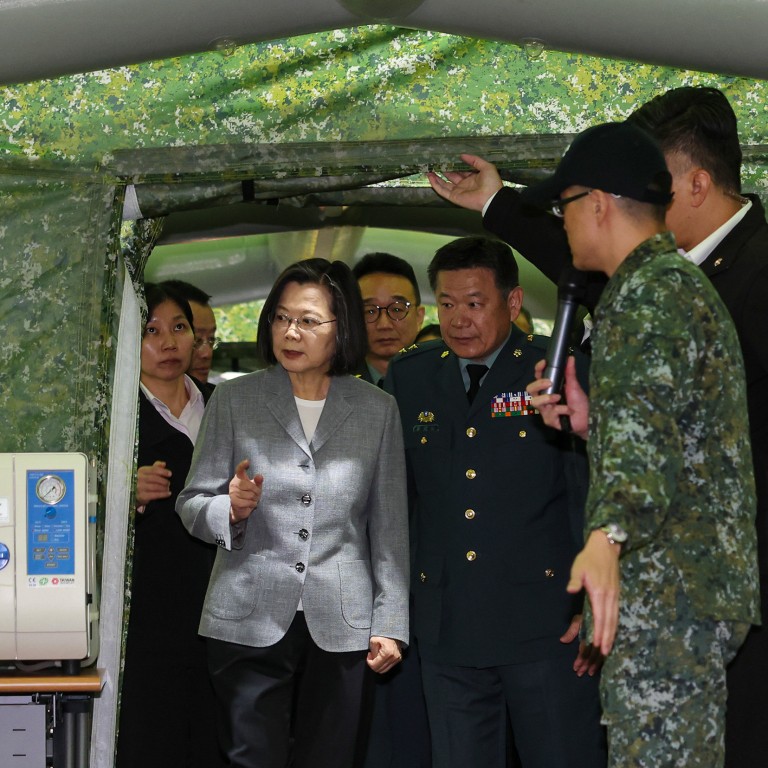
Taiwan opens first medical training centre for treating combat injuries as cross-strait tensions run high
- Taiwanese leader Tsai Ing-wen inaugurates facility aimed at improving island’s ability to handle battlefield trauma in event of conflict with mainland
- It has AI and virtual reality systems to simulate tactical combat casualty care under wartime conditions and teach staff to cope with pressure
“The inauguration of the tactical combat casualty care facility represents the overall upgrading of the expertise and training in the National Defence Medical Centre’s casualty care service,” Tsai said during a ceremony in Taipei on Monday.
Taiwan looks to boost ability to treat mass casualties in case PLA attacks
She said the centre would be responsible for cultivating medical officers and military emergency responders by strengthening their abilities to deal with combat casualties, which would increase Taiwanese soldiers’ chances of survival in a potential war.
Tsai also said the military should work with the civilian sector to strengthen trauma care services, saying the two sides could “effectively coordinate with each other for needed resources, thereby maximising our casualty care capacity”.
Beijing views Taiwan as its territory to be taken under control, by force if necessary. It has intensified its military operations around the island in response to what it perceives as increased attempts by Taipei to pursue independence and work with Washington to counter the mainland.

Like most countries, the United States – an informal ally and the island’s largest arms supplier – does not recognise Taiwan as an independent state but is opposed to any unilateral change of the cross-strait status quo by force.
Construction of the Taipei facility started in 2021 and became a priority following Russia’s invasion of Ukraine, which highlighted the need for combat casualty care services, according to centre officials.
With the help of the National Chung-Shan Institute of Science and Technology, the island’s top weapons maker, the facility has been equipped with advanced systems with artificial intelligence and virtual reality functions to simulate tactical combat casualty care under conditions including mass destruction by weapons, chemicals and bioagents, the officials said.
PLA tests evacuation skills to prepare for possible Taiwan conflict: analysts
It also has virtual reality systems for training medical staff to work in high-intensity environments, cope with psychological pressure and keep patients alive during evacuations, the officials said.
They said the centre, which was modelled on similar facilities in the US, had held classes earlier this year to train nearly 3,800 military personnel to serve as medical workers in the event of a war.
The officials noted that Taiwan’s Health Ministry was also tasked with planning and preparing emergency wards in large hospitals on the island to treat soldiers and civilians.

